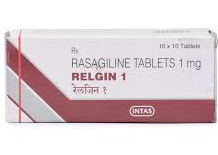Costs of Rasagiline
Introduction to costs of rasagiline
Rasagiline is a medication primarily used in the management of Parkinson’s disease. As a selective monoamine oxidase B (MAO-B) inhibitor, rasagiline helps to increase dopamine levels in the brain, which can alleviate symptoms such as tremors, stiffness, and difficulty with movement. For patients considering this treatment, understanding the costs of rasagiline is essential for making informed healthcare decisions. This article will explore the various forms and dosages of rasagiline, how to take it, potential side effects, and strategies for managing those side effects.
Overview of Rasagiline(costs of rasagiline)
Rasagiline is available as an oral medication and is particularly beneficial for patients with early-stage Parkinson’s disease or those who are experiencing motor fluctuations. Understanding the costs of rasagiline can significantly impact a patient’s decision-making process regarding their treatment plan. This medication is often prescribed in conjunction with other Parkinson’s disease therapies to optimize management and enhance the quality of life.
Forms and Dosage Strengths(costs of rasagiline)
Rasagiline is typically available in the following forms:
Tablets: The medication is commonly supplied in 1 mg and 2 mg strengths. The usual recommended starting dose is 1 mg taken once daily, which may be increased to 2 mg based on individual patient response and tolerability.
Patients should consult their healthcare provider to determine the appropriate dosage based on their specific health needs and treatment goals.
How to Take Rasagiline(costs of rasagiline)
To maximize the benefits of rasagiline, follow these guidelines:
Follow Prescription: Always take rasagiline exactly as prescribed by your healthcare provider.
Timing: It is generally recommended to take rasagiline at the same time each day to maintain consistent blood levels.
With or Without Food: Rasagiline can be taken with or without food, although some patients may find it easier to take with a meal to reduce gastrointestinal discomfort.
Regular Monitoring: Schedule regular follow-up appointments with your healthcare provider to monitor the effectiveness of the medication and any potential side effects.
Side Effects of Rasagiline(costs of rasagiline)
While rasagiline is generally well-tolerated, some patients may experience side effects. Common side effects include:
Headache
Nausea
Dizziness
Insomnia
Abdominal pain
More serious side effects, such as high blood pressure or serotonin syndrome (especially when taken with other medications that increase serotonin levels), can occur. It is essential to seek medical attention if any severe symptoms arise.
How to Combat Side Effects(costs of rasagiline)
To effectively manage potential side effects, consider the following strategies:
Stay Hydrated: Drinking plenty of fluids can help alleviate some gastrointestinal issues.
Dietary Adjustments: Eating smaller, more frequent meals can help manage nausea and abdominal discomfort.
Monitor Symptoms: Keep track of any side effects and report them to your healthcare provider, especially if they persist or worsen.
Consult Your Doctor: If side effects occur, discuss potential adjustments to your treatment plan with your healthcare provider.
Conclusion(costs of rasagiline)
Understanding the costs of rasagiline and how to use this medication effectively is essential for individuals managing Parkinson’s disease. By adhering to prescribed dosages and being aware of potential side effects, patients can optimize their treatment and improve their quality of life. As ongoing research continues to explore the benefits of rasagiline, it remains a vital option for those seeking effective management of their symptoms.
symptoms.




Reviews
There are no reviews yet.